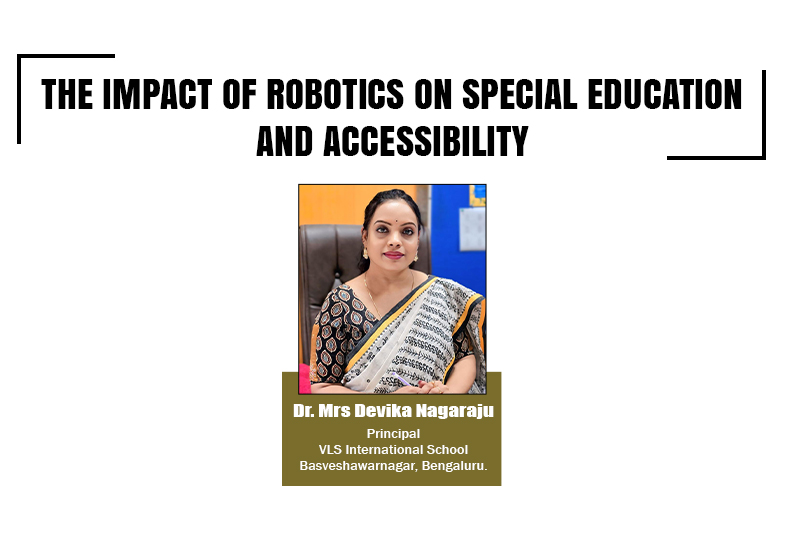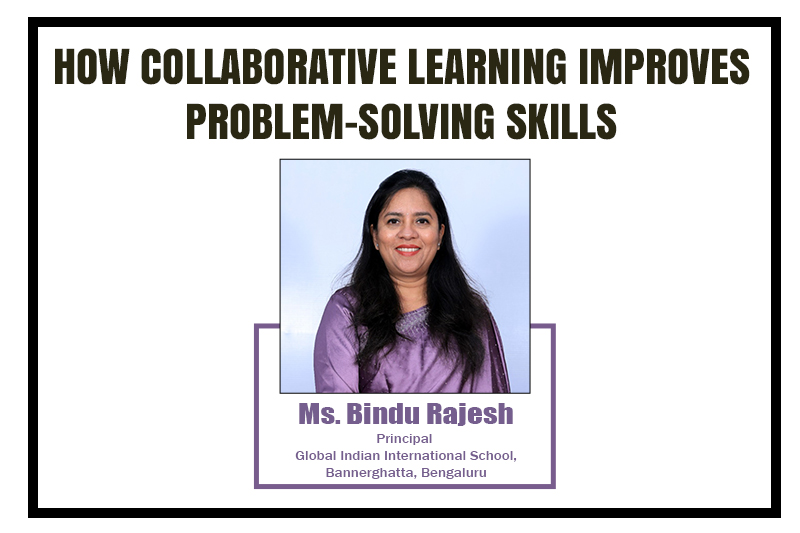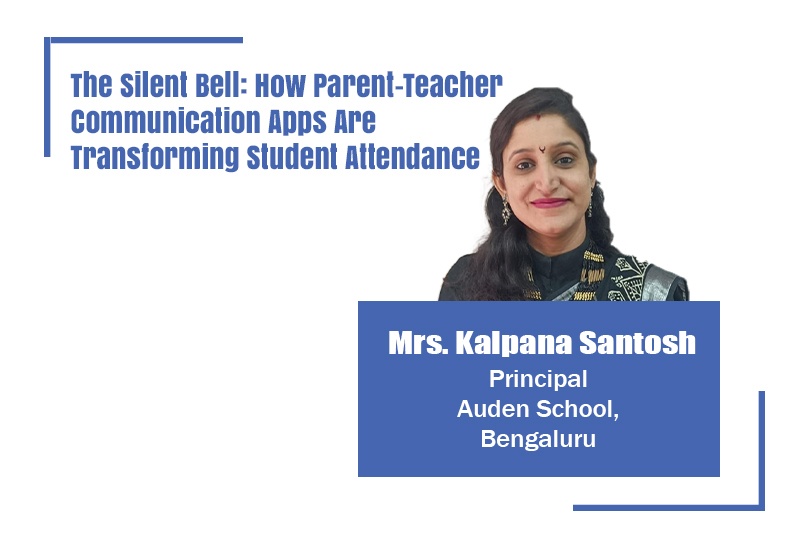The Impact of Robotics on Special Education: Insights by Dr. Devika Nagaraju, VLS International School
What if a classroom assistant could never lose patience, adapt instantly to each child’s needs, and offer support with a friendly face and tireless enthusiasm? For many students with special needs, this is no longer a dream — it's a reality, thanks to robotics.
At VLS International School, innovation meets empathy under the leadership of Dr. Mrs. Devika Nagaraju, whose vision champions inclusive education through the thoughtful integration of technology. From supporting children with autism to empowering those with speech and mobility challenges, robots are reshaping how we define accessibility and support in education.
With a keen eye on both the human and technological sides of learning, Dr. Nagaraju explores how robotics — far from replacing the teacher — becomes a powerful ally in the mission to nurture every learner’s potential.
Empowering Special Education through Robotics
Children with special educational needs often face barriers that go beyond the academic curriculum. These include difficulties with communication, mobility, social interaction, and emotional regulation. Dr. Nagaraju emphasizes how educational robotics is breaking these barriers, offering support that is both innovative and deeply impactful.
One of the most compelling aspects of robotics in special education is its ability to create consistent, patient, and non-judgmental learning environments — qualities that are invaluable for children who require a different pace or method of instruction.
Social and Communication Skills: A New Approach
Social robots like NAO, Pepper, and Kaspar are now being programmed to support students on the autism spectrum. These humanoid robots are designed to interact in predictable and repeatable ways, helping children learn crucial social skills such as reading facial expressions, understanding tone of voice, and maintaining eye contact.
Dr. Nagaraju notes that these robots allow students to engage in social learning without the pressure of human judgment. Over time, this builds confidence and encourages greater participation in group activities and classroom interactions.
Enhancing Accessibility in Classrooms
Accessibility in education isn't just about physical space — it's about ensuring that every student can engage with learning on their own terms.
Assistive robots are particularly valuable for students with physical disabilities, enabling them to perform tasks such as writing, picking up objects, or even navigating the classroom independently. When integrated with adaptive technologies like speech recognition and eye-tracking systems, robots offer a highly customizable interface for learners with mobility or speech challenges.
At VLS International School, Dr. Nagaraju envisions a future where such technology is commonplace, making every classroom more inclusive and accessible.
Speech Therapy Reinvented
Children with speech and language impairments often require consistent practice to improve their communication skills — a process that can be time-consuming and emotionally taxing.
Speech therapy robots provide a new dimension to this form of intervention. They offer interactive, repeatable, and fatigue-free sessions, helping children with developmental delays or language issues improve pronunciation, vocabulary, and conversational ability.
Dr. Nagaraju highlights that because these sessions can be customized and repeated endlessly, they offer a scalable solution for both home and school environments.
Inclusion through Robotic Assistance
Integrating students with special needs into mainstream classrooms is a goal shared by educators worldwide. Robotics is playing a transformative role here.
Robots can act as peer tutors or classroom assistants, reinforcing instructions or offering explanations without drawing unwanted attention to students who may need extra help. This discreet support system helps avoid the stigma often associated with special education interventions.
Such use of robotics aligns closely with the broader goals of inclusive education, ensuring all students — regardless of ability — can participate fully in classroom life.
Emotional and Behavioral Regulation
Beyond academics, emotional regulation is a key area where robotics is making a difference.
Children with ADHD or emotional disorders often struggle with stress, attention, and behavior management. Robots programmed with behavioral guidance can offer structured tasks, soothing routines, or instant feedback, which help children stay on track and regulate their responses in a controlled, supportive environment.
Dr. Nagaraju believes that such interventions are especially effective in early education settings, where developing emotional intelligence is as important as academic achievement.
Challenges and Considerations
While the potential of robotics in special education is immense, Dr. Nagaraju also acknowledges the challenges:
- High costs: Advanced robots can be prohibitively expensive, particularly for underfunded schools.
- Training requirements: Teachers and therapists must be equipped with the necessary skills to use these tools effectively.
- Ethical concerns: There is an ongoing need to balance technology with human interaction, especially to nurture emotional and social development.
Despite these challenges, the long-term benefits of robotics in education are undeniable.
Looking Ahead: The Future of Robotics in Learning
The future of robotics in special education is promising and filled with possibilities. Dr. Nagaraju envisions several key directions:
- AI integration: As robots become more intelligent and context-aware, their ability to respond to individual needs will improve.
- Affordable innovation: Designing low-cost, scalable robotic systems for rural or budget-constrained schools is crucial.
- Cross-disciplinary collaboration: Educators, engineers, therapists, and policymakers must work together to create practical and impactful solutions.
Additionally, with the rise of remote learning, robotics offers an interactive dimension that can keep special needs students engaged from home. One-on-one interaction, sensory engagement, and personalized learning pathways can be delivered through virtual or in-person robotic systems, making learning truly borderless.
A Safer, Customized Learning Environment
At VLS International School, inclusivity is not just a policy — it’s a practice. Dr. Nagaraju stresses that robotics creates a safe, structured, and personalized environment for sensitive learners. Whether used for daily learning activities or specific therapeutic interventions, these technologies help foster independence and confidence in students.
Conclusion: Transforming Special Education with Technology
Robotics is no longer a luxury or a futuristic vision; it is a practical tool that is transforming the landscape of special education and accessibility. As Dr. Devika Nagaraju rightly observes, the integration of robotics and AI in classrooms is not just enhancing learning — it is empowering students, supporting teachers, and paving the way for a more inclusive education system.
By embracing educational robotics, schools can ensure that every learner — regardless of ability — has the opportunity to succeed in a dynamic, supportive, and technologically advanced environment.






